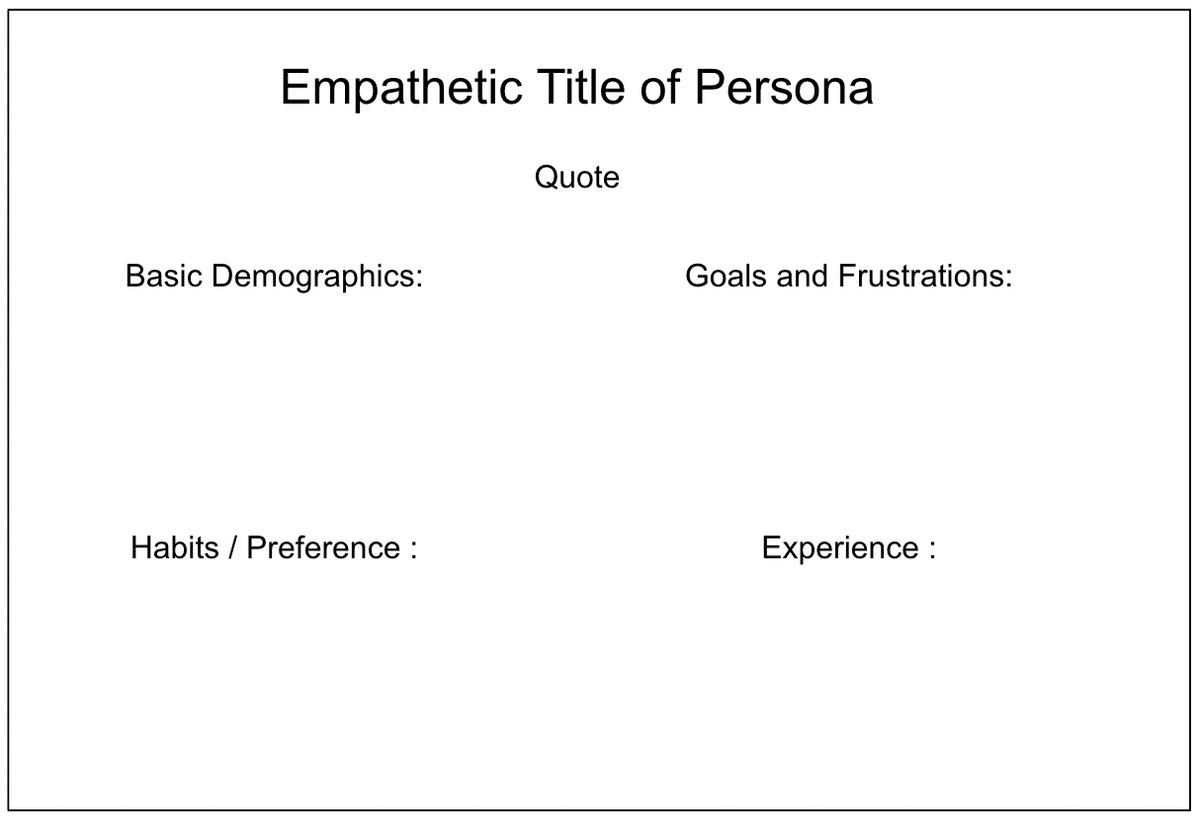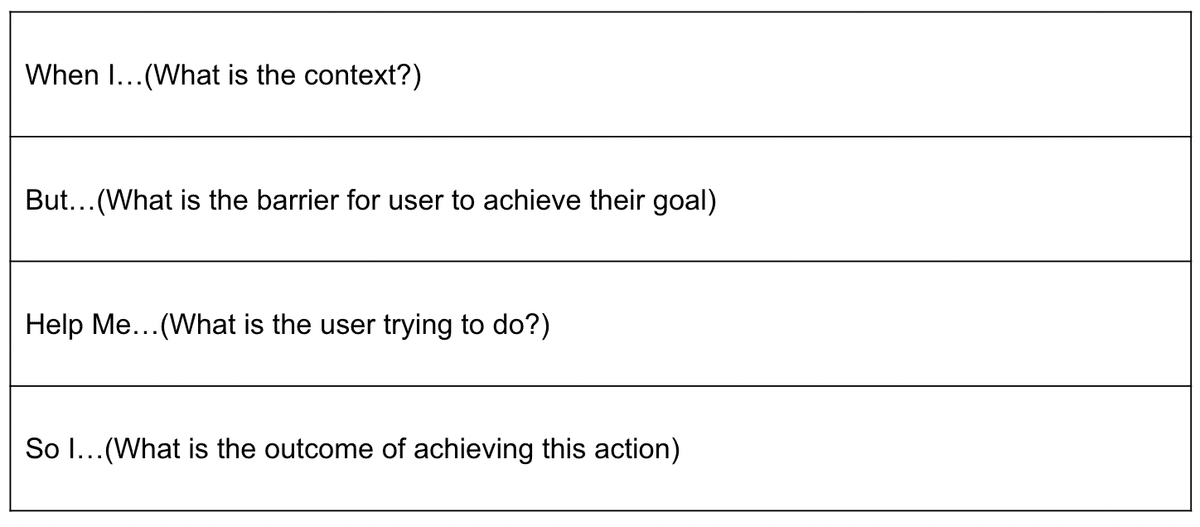EG2201A - 2
3. Problem Description - Understand the problem and users
After successfully reframing our information, we moved on to define our problem using three frameworks: Persona, Job To Be Done, and Job Statement. Personally, I believe this phase is crucial for developing innovative products.
Persona:
The first activity involved creating personas to keep the design and solution-making phases user-focused. Before this activity, our understanding of our target audience was unclear. For instance, in our team discussions, when we referred to "users," I thought of "NUS students" while some of my teammates considered "people who visit the NUS campus." This distinction is significant, and the persona activity helped us clearly define who our users are. We used the following framework for creating personas, shown here with one example for reference:

Job To Be Done:
Next, we listed the Jobs To Be Done. This concept involves understanding that when customers purchase products or services, they do so to fulfill specific goals or "jobs." We categorized jobs as "functional," "emotional," and "social" to clearly understand what our users expect from our product.

Job Statement:
We then transformed the Jobs To Be Done into Job Statements, a critical step in clearly reframing our problem. This is where solution creation begins, and hence, our team spent considerable time crafting the Job Statement. Specifically, we debated the "When I…" part extensively because, at this stage, we were uncertain whether we were targeting users who had already decided to take away food or those still considering whether to take away or dine in. This was crucial for our group because it would also affect our final solution. The Job Statement helped our group maintain alignment on the context in which our product would be used.

How Might We:
Finally, to clarify and directly address our problem, we crafted three "How Might We" (HMW) statements to guide our solution design in a user-centric way. Creating HMW statements begins simply with the phrase "How might we...?" However, crafting these statements can be challenging as they need to be problem-oriented and balanced—not too broad yet not too narrow.
For example, one of the HMW statements we developed for our class project was: "How might we help people feel validated when using reusable containers for takeaways on campus?" This statement focuses on the emotional reward users might feel, which encourages the use of sustainable practices like reusable containers. These HMW questions are pivotal as they steer the ideation process and ensure that the solutions we develop are both innovative and directly aligned with the users' needs.
この記事が気に入ったらサポートをしてみませんか?
